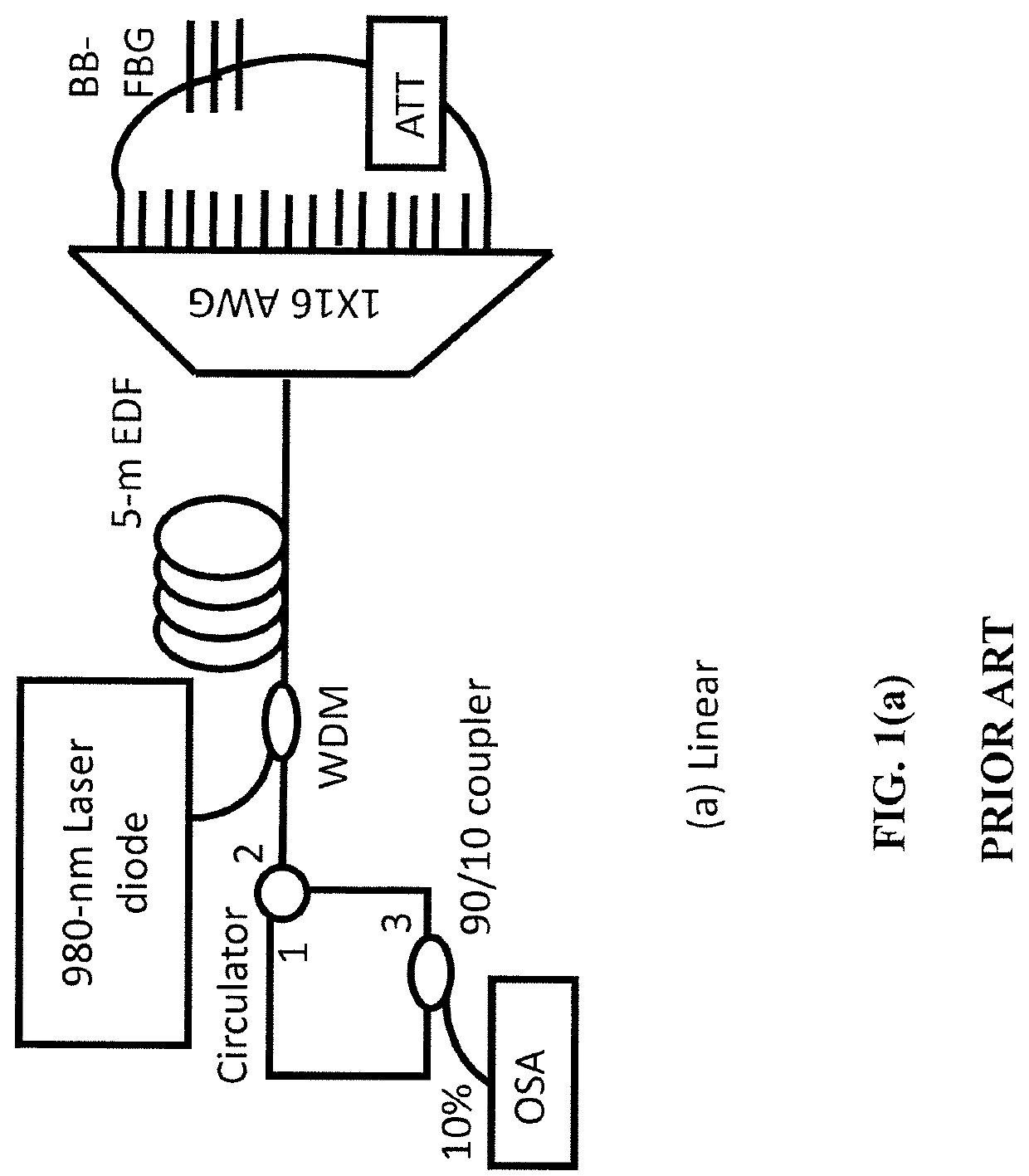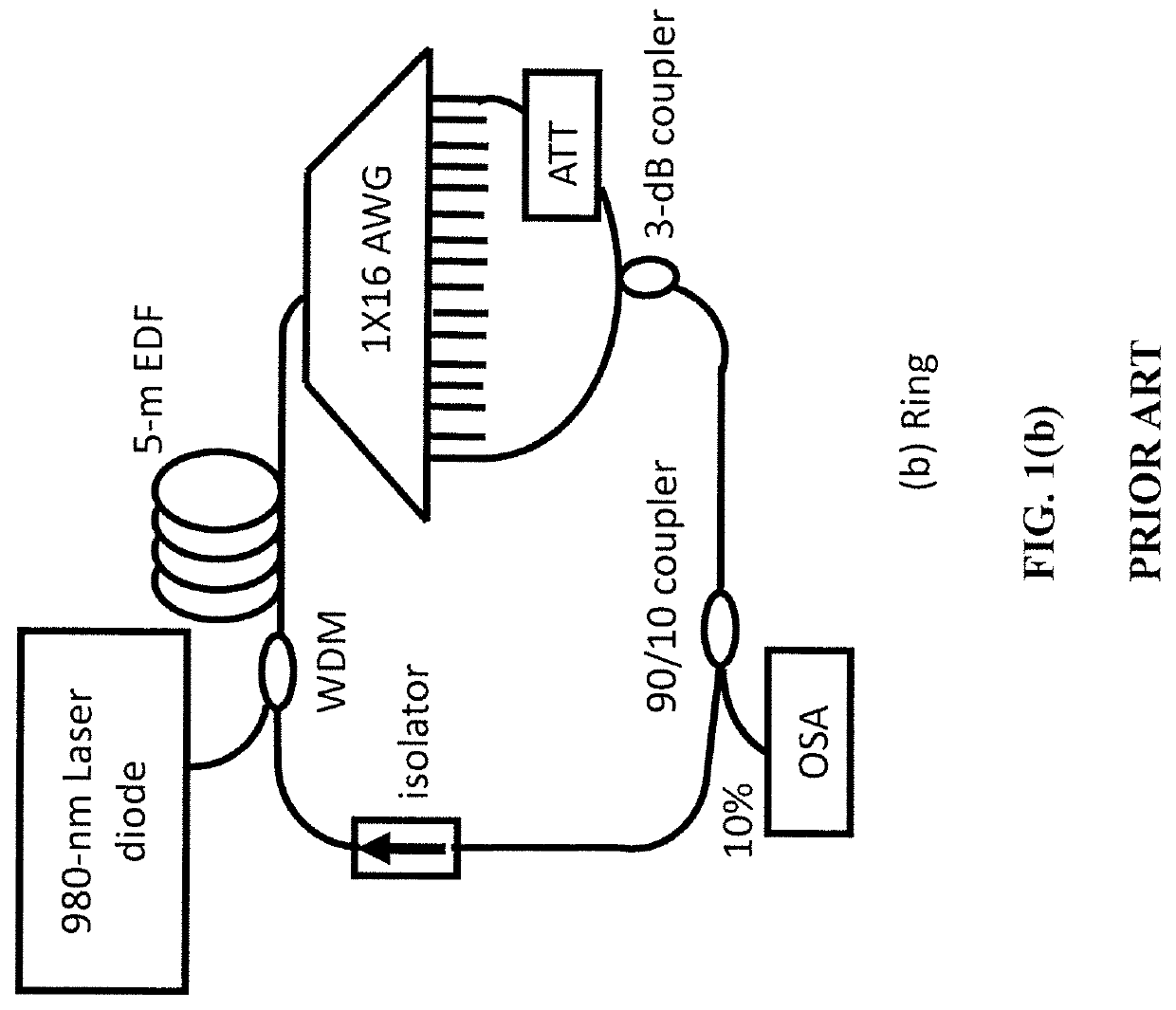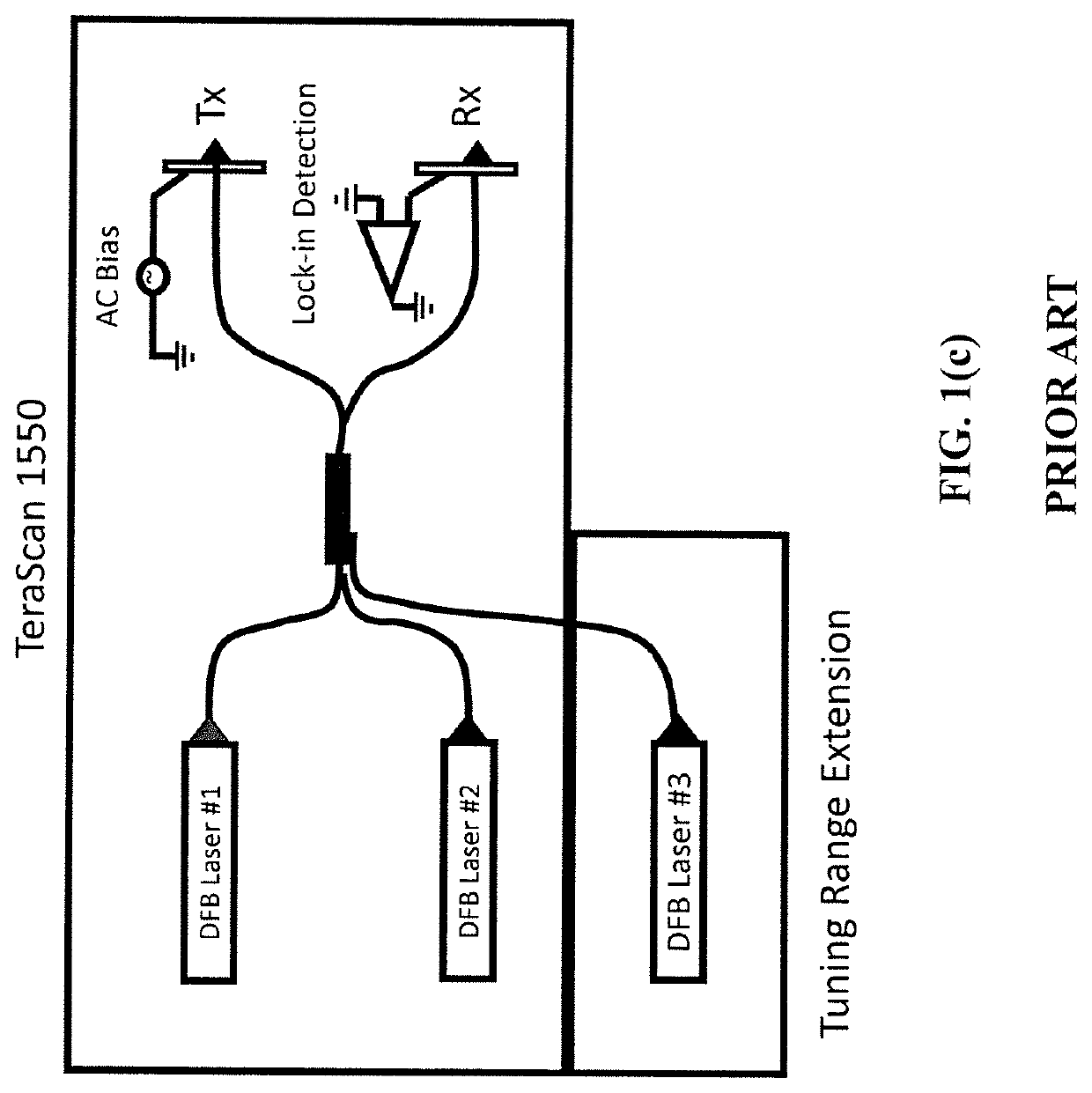Fiber-based continuous optical beat laser source to generate terahertz waves using lithium niobate crystal embedded in the fiber
a laser source and fiber technology, applied in the field of fiber-based continuous optical beat laser sources, can solve the problems of low efficiency, low efficiency, and low efficiency of current fiber-based laser systems for cw (continuous wavelength)
- Summary
- Abstract
- Description
- Claims
- Application Information
AI Technical Summary
Benefits of technology
Problems solved by technology
Method used
Image
Examples
Embodiment Construction
[0042]Referring now to the Figures, and first referring to FIG. 4, an experimental setup is illustrated of the C-band SOA-based tunable fiber laser with two nested ring cavities (i.e., hybrid compound-ring resonator) and two broadband SLMs that can serve as either dual-output ports or a single output port depending on the reflectivity of each SLM. Each ring cavity is comprised of two branches: I-II and I-III, for the inner and the outer ring cavity, respectively. Both ring cavities share a common branch, I, which contains SOA1 (Kamelian, OPA-20-N-C-SU), a tunable optical filter (TF-11-11-1520 / 1570) sandwiched between two similar FBGs, and a polarization controller, PC1. Branch II contains SOA2 (Thorlabs, S1013S), and a polarization controller, PC2. Due to the lack of availability of a third SOA, branch III only contains a polarization controller, PC3. As FIG. 4 portrays, all branches are connected by two 3 dB fiber couplers, C1 and C2, which are connected to SLM1 and SLM2, correspon...
PUM
| Property | Measurement | Unit |
|---|---|---|
| thick | aaaaa | aaaaa |
| thick | aaaaa | aaaaa |
| distance | aaaaa | aaaaa |
Abstract
Description
Claims
Application Information
 Login to View More
Login to View More - R&D
- Intellectual Property
- Life Sciences
- Materials
- Tech Scout
- Unparalleled Data Quality
- Higher Quality Content
- 60% Fewer Hallucinations
Browse by: Latest US Patents, China's latest patents, Technical Efficacy Thesaurus, Application Domain, Technology Topic, Popular Technical Reports.
© 2025 PatSnap. All rights reserved.Legal|Privacy policy|Modern Slavery Act Transparency Statement|Sitemap|About US| Contact US: help@patsnap.com



